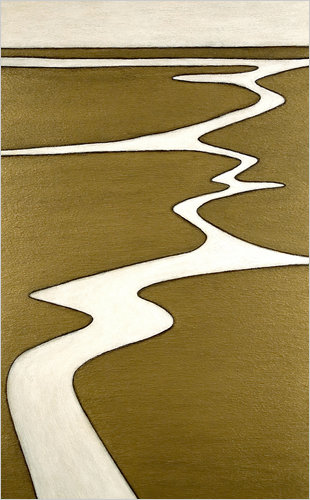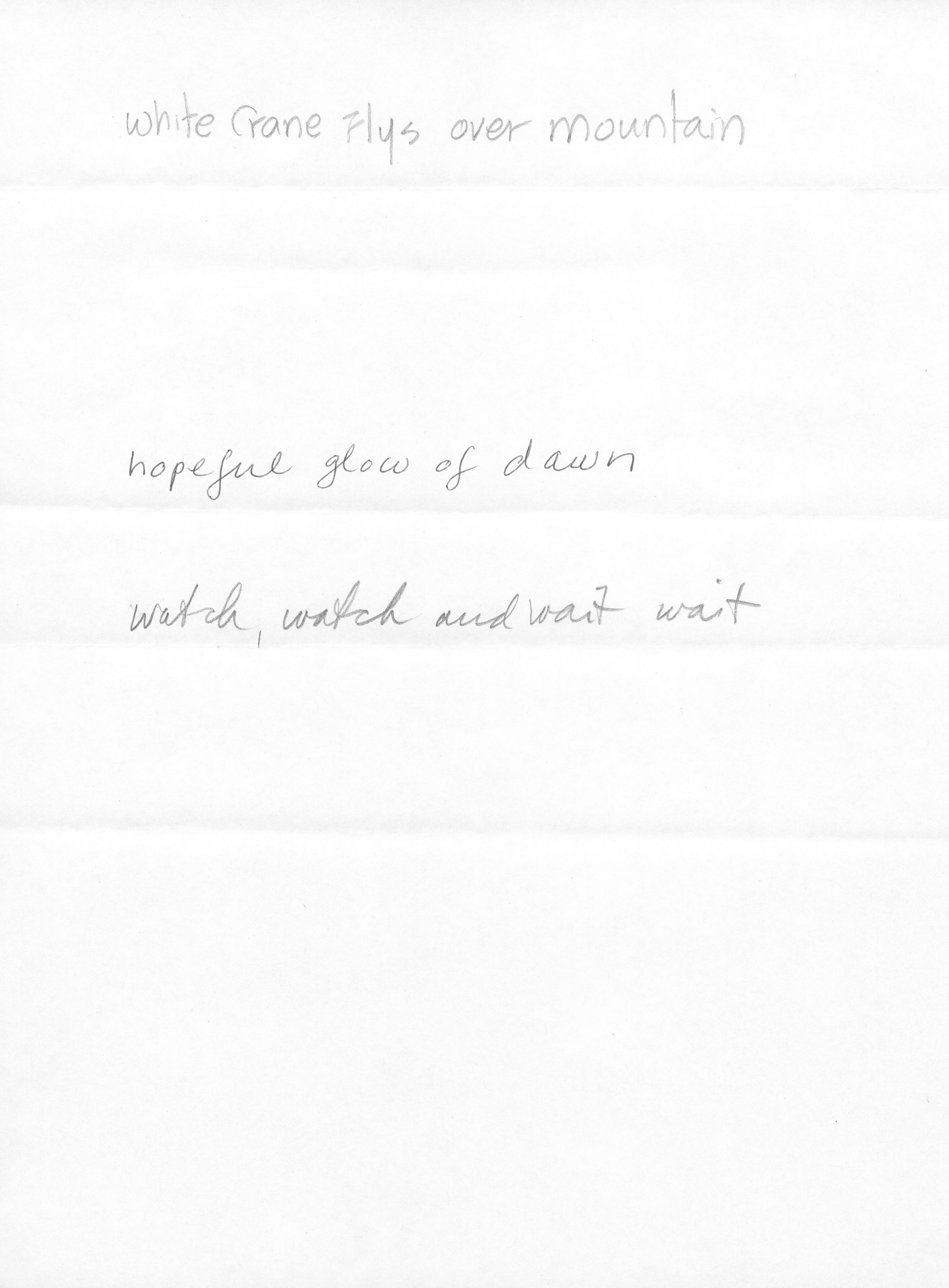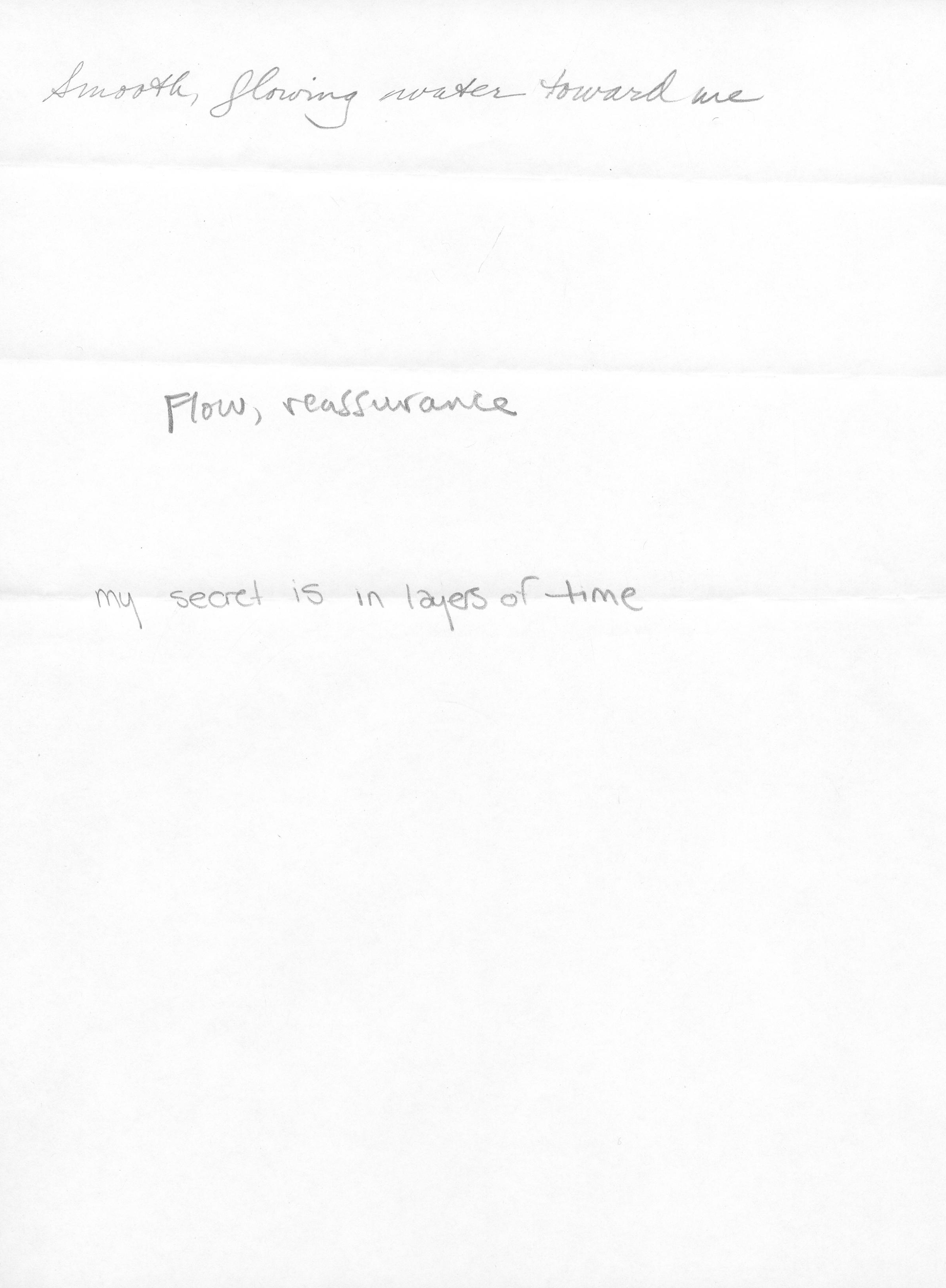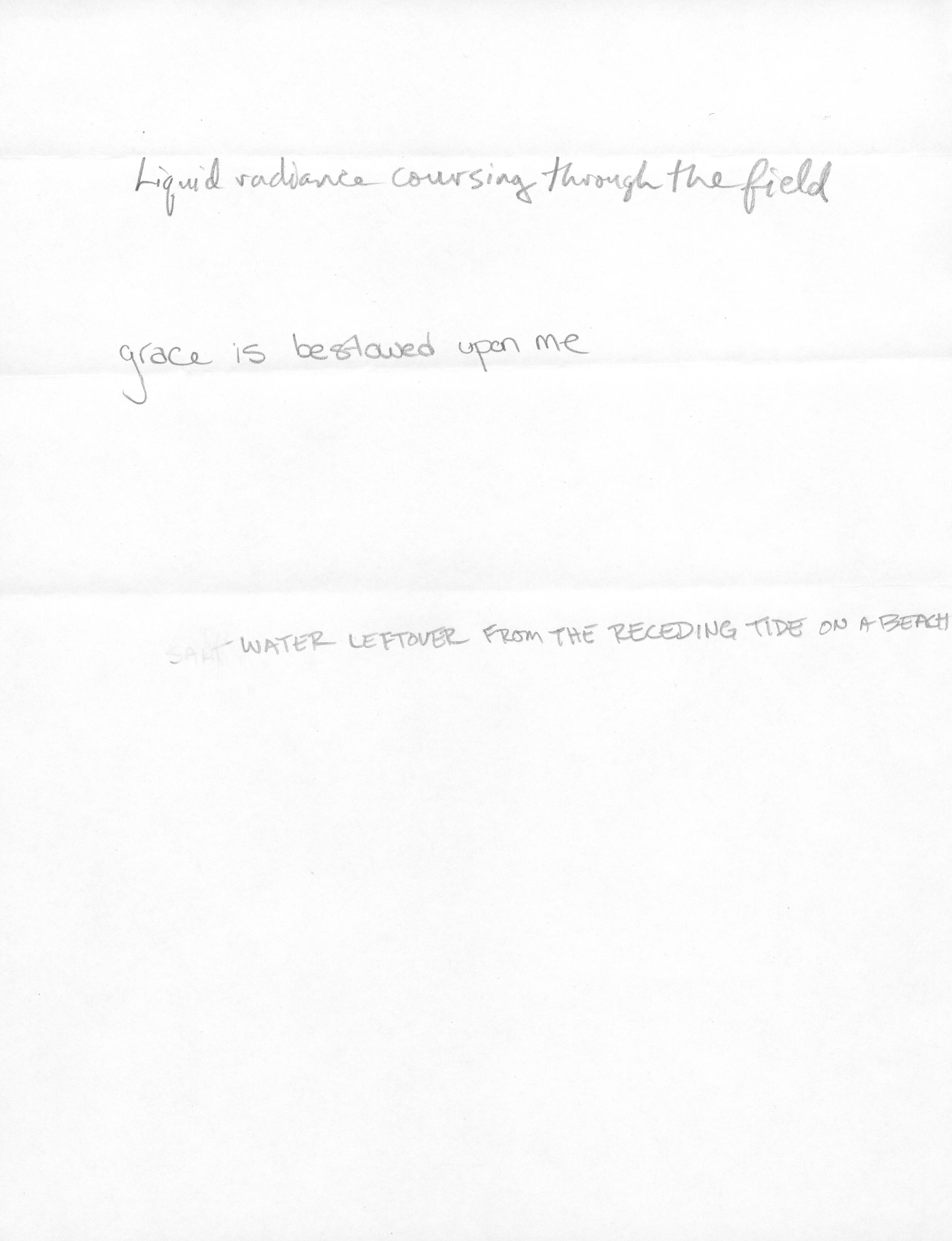Last night at Manresa Gallery we had the second meeting of our four-part series The Art of Meditation. Led by local San Francisco Zen Buddhist Priest Tova Green the meeting focused on Tobi Kahn’s large-scale painting VYHTI. We began the evening with a 15 minute sitting meditation followed by a short walking meditation. Tova then led us into an activity which generated beautiful collaborative haiku poetry.
With a blank piece of paper and pencil in hand, Tova asked participants to write down several words in response to three questions: 1) What do you see in the painting? 2) What emotions does the painting bring out in you and 3) What message do you recieve from the painting? After writing down each line, Tova instructed us to fold the paper over and pass it on two people over so that no one could see what the previous person had written. What unfolded were poems that captured the essence of each viewer’s experience of VYHTI. Each poem, participants remarked, read as though they had been written by a singular author. Some beautiful examples follow below.
Tova’s dharma talk spoke to notions of stillness and flow in ones meditation practice and the impermanence in our daily lives as it related to the imagery in Kahn’s VYHTI. In our ever changing lives, Tova explained that meditation is a tool which when practiced can slow us down, help us to pay attention and be mindful, kinder to ourselves and others, and be more present for our own and others pain.
Jisan Tova Green is Zen priest and a hospice social worker. She was ordained by Eijun Linda Cutts in 2003 and has been a resident of San Francisco Zen Center for the last twelve years. Tova has played cello since the age of 10 and writes, photographs and paints water colors.
NEXT WEEK in The Art of Meditation:
Seeing Nothing by Julia Ten Eyck
February 3 / 6-7:30pm
Wallace Stevens’ poem “The Snow Man” describes someone who “beholds nothing that is not there and the nothing that is.” How do we truly perceive something without adding what is not there? Practicing meditation is a way to train ourselves to cut through the illusion that we need something more in order to feel secure and complete and, instead, to see that things are perfect and whole and complete just as they are. In the words of Suzuki Roshi, we see “things as it is.”




